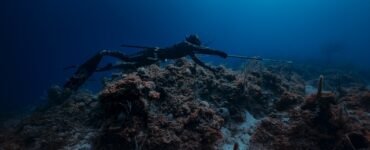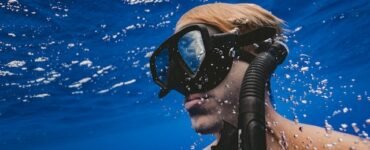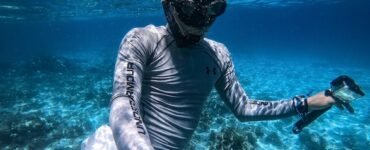Aiming and shooting accurately is crucial in spearfishing. The ability to hit your target with precision not only ensures a successful catch but also promotes safety and ethical practices. In this article we will explore some essential tips to help you maximize your accuracy in aiming and shooting while spearfishing.
1. Practice Proper Technique
Developing proper technique is the foundation for accuracy in spearfishing. Here are some key elements to focus on:
- Grip and Stance: Maintain a firm grip on your speargun and adopt a stable stance to minimize unnecessary movement and maximize control.
- Alignment: Align your dominant eye spear shaft and target to establish a clear sight picture. This helps improve accuracy and target acquisition.
- Breathing Control: Practice breath control to minimize movement and stabilize your aim. Take a deep breath exhale partially and hold your breath momentarily when taking the shot.
- Smooth Trigger Pull: Avoid jerky or sudden movements when pulling the trigger. Maintain a smooth steady motion to improve accuracy and prevent deviations in aim.
Regular practice and conscious focus on these aspects of technique will help you develop muscle memory and enhance your overall accuracy.
2. Understand Target Anatomy
Understanding the anatomy of your target species is vital for accurate aiming. Knowing where vital organs are located can help you aim for the most effective and humane shots. Familiarize yourself with the anatomy of the fish species you are targeting including the position of the brain spine and major organs. This knowledge will allow you to aim for critical areas and increase the chances of a successful catch.
3. Consider Distance and Water Refraction
Water refracts light making objects appear closer or distorted underwater. This phenomenon can affect your perception of distance and alter your aim. Keep the following in mind:
- Compensate for Refraction: Adjust your aim slightly lower than the actual target to compensate for the refraction effect. This compensatory adjustment will help you hit the intended target accurately.
- Practice Depth Perception: Regularly practice estimating distances underwater. This will improve your depth perception and help you gauge the correct aiming point.
By understanding and accounting for the effects of water refraction you can make more accurate shots.
4. Be Mindful of Shot Placement
Shot placement is crucial for an ethical catch and to prevent unnecessary suffering of the fish. Here are some guidelines to follow:
- Target Vital Areas: Aim for the head or the area just behind the gills to ensure a swift and humane kill. Avoid aiming at non-vital areas that may result in a wounded or injured fish.
- Consider Fish Size: Adjust your shot placement according to the size of the fish. Larger fish may require deeper penetration to reach vital organs effectively.
- Avoid Over-Shooting: Ensure you have a clear line of sight before taking a shot. Avoid shooting through obstacles or vegetation that may deflect the spear or reduce accuracy.
Always prioritize the humane and ethical treatment of the fish you target.
5. Learn from Experience and Feedback
Experience plays a crucial role in improving accuracy. Each diving trip provides an opportunity to learn and refine your skills. Consider the following:
- Analyze Missed Shots: Analyze shots that miss their mark. Identify any patterns or mistakes that may have led to the inaccuracy. Adjust your technique accordingly.
- Seek Feedback: Dive with experienced spearfishers and seek their feedback. They can offer valuable insights and tips to improve your accuracy.
- Record and Review: Record your dives to review your shots later. This allows you to assess your technique identify areas for improvement and track your progress over time.
Conclusion
Maximizing accuracy in aiming and shooting is a continuous process that requires practice technique and knowledge. By implementing the tips outlined in this article you can enhance your accuracy and increase your success rate in spearfishing. Remember to always prioritize safety ethical practices and the well-being of the fish you target. With time and dedication you will become a more precise and effective spearfisher.
FAQs
1. How can I improve my aim underwater?
Improving aim underwater involves practicing proper technique understanding target anatomy compensating for water refraction and learning from experience. Regular practice and conscious focus on these aspects will help you enhance your aim.
2. What is the best shot placement for a humane kill?
The best shot placement for a humane kill is to aim for the head or the area just behind the gills. This targets vital areas and ensures a swift and ethical kill.
3. Should I aim differently based on the size of the fish?
Yes you should adjust your shot placement based on the size of the fish. Larger fish may require deeper penetration to reach vital organs effectively.
4. How can I deal with missed shots?
Analyze missed shots to identify any patterns or mistakes that may have led to the inaccuracy. Seek feedback from experienced spearfishers record your dives for review and make adjustments to your technique accordingly.
5. Is safety important while aiming and shooting underwater?
Yes safety is crucial when aiming and shooting underwater. Always prioritize safety follow best practices and ensure that you have a clear line of sight before taking a shot.

Explore the mesmerizing world of spearfishing on our blog! Discover tips, techniques, and breathtaking underwater stories from passionate spearfishers. Dive in for an ocean of adventure.







